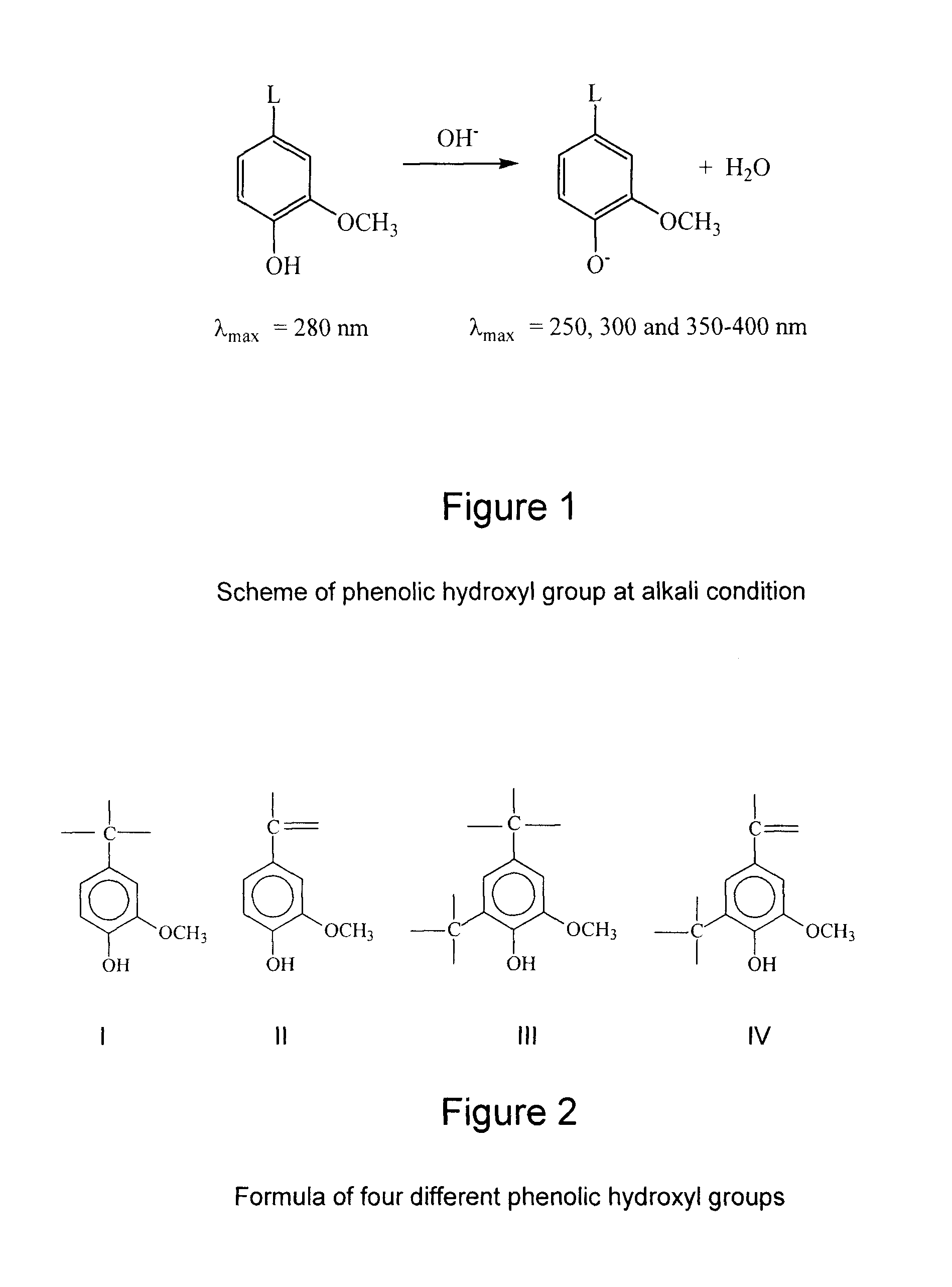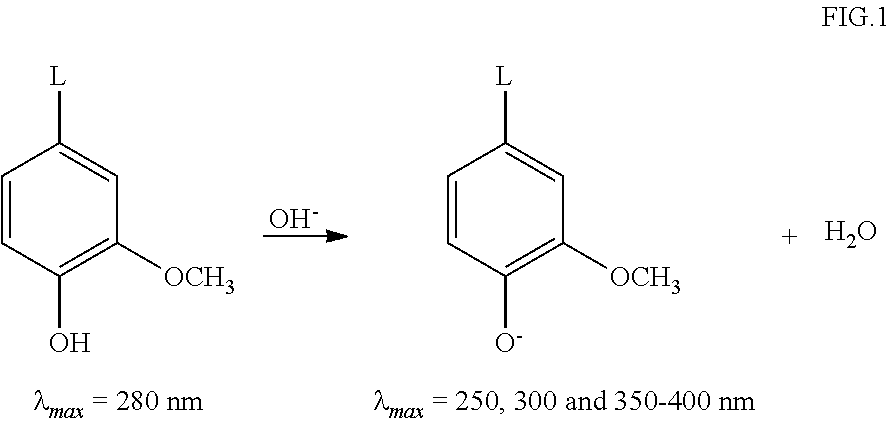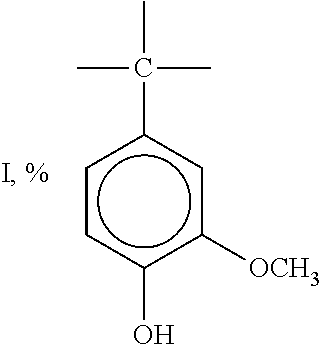Process for fungal modification of lignin and preparing wood adhesives with the modified lignin and wood composites made from such adhesives
a technology of fungal modification and lignin, which is applied in the field of fungal modification of lignin and wood composites, can solve the problems of low redox potential of laccases produced by brown-rot fungi, difficulty in preparing lignin,
- Summary
- Abstract
- Description
- Claims
- Application Information
AI Technical Summary
Benefits of technology
Problems solved by technology
Method used
Image
Examples
example 1
Modification of Organosolv Lignin with Fungus Pycnoporellus alboluteus (FTK 76A)
[0055]Fungus Pycnoporellus alboluteus (Ellis & Everh.) Kotl. & Pouz. (FTK 76A) [a brown-rot fungus, from the Culture Collection of Wood-inhabiting Fungi (FTK series) of FPInnovations, Quebec, Canada, maintained in a liquid nitrogen reservoir for cryopreservation at −198° C. before use] and organosolv lignin were used.
[0056]The selected fungal species FTK 76A was retrieved from the liquid nitrogen reservoir and grown on a 2% (w / w) malt extract agar medium in Petri plates at 25° C. for one week. Mycelia plugs (5 mm in diameter) were cut from each fungal colony and transferred in 1-L flasks (5 plugs in each) containing 450 mL of a 2% (w / w) Difco malt extract broth (Becton, Dickinson and Company, Sparks, Md. USA) in distilled water. The pH of the medium was 5.5. The flasks were cultured on a shaker (125 rpm) at 25° C. for 14 days.
[0057]The organosolv lignin was first sterilized in an oven at 70° C. for 2 hou...
examples 2-4
Modification of Organosolv Lignin with Different Fungi
[0058]The procedure and conditions were the same as EXAMPLE 1. The only difference was fungal species. The example numbers and fungal species are listed in Table 1.
TABLE 1Modification of organosolv lignin with different fungiEX-Type ofAMPLEFungal speciefungiLigninCode1Pycnoporellus alboluteusbrown-rotorganosolvOLEA(Ellis & Everh.) Kotl. &ligninPouz. (FTK 76A)2Phanerochaete cremeawhite-rotOLEB(Bres.) Parmasto(FTK 332A)3Lenzites elegans (Spreng.)white-rotOLECPat. (FTK 329A)4Meruliopsis taxicola (Pers.)brown-rotOLEDBondartsev (FTK 122B)
[0059]Ultraviolet-spectroscopy offers a simple and rapid way of determining phenolic hydroxyl groups (Zakis, 1994). Phenolic hydroxyl group and proportion of α-conjugated phenolics were calculated based on the absorbance values at 300 nm and 350 nm-365 nm with difference buffer solution at pH6, pH12, and with 0.2N NaOH as shown in FIGS. 1 and 2 (Zakis, 1994). The method of quantifying phenolic hydroxy...
examples 5-8
Modification of Ammonium Lignosulfonate with Different Fungi
[0061]The procedure and conditions were the same as EXAMPLES 1-4. The only difference was lignin type. Lignin used for EXAMPLES 5-8 was ammonium lignosulfonate. The example numbers and fungal species are listed in Table 3.
TABLE 3Modification of ammonium lignosulfonate with different fungiEX-Type ofAMPLEFungal speciefungiLigninCode5Pycnoporellus alboluteusbrown-rotAmmoniumALEA(Ellis & Everh.) Kotl. &ligno-sulfonatePouz. (FTK 76A)(Tembec)6Phanerochaete cremeawhite-rotALEB(Bres.) Parmasto(FTK 332A)7Lenzites eleganswhite-rotALEC(Spreng.) Pat.(FTK 329A)8Meruliopsis taxicolabrown-rotALED(Pers.) Bondartsev(FTK 122B)
PUM
| Property | Measurement | Unit |
|---|---|---|
| molar ratio | aaaaa | aaaaa |
| molar ratio | aaaaa | aaaaa |
| diameter | aaaaa | aaaaa |
Abstract
Description
Claims
Application Information
 Login to View More
Login to View More - R&D
- Intellectual Property
- Life Sciences
- Materials
- Tech Scout
- Unparalleled Data Quality
- Higher Quality Content
- 60% Fewer Hallucinations
Browse by: Latest US Patents, China's latest patents, Technical Efficacy Thesaurus, Application Domain, Technology Topic, Popular Technical Reports.
© 2025 PatSnap. All rights reserved.Legal|Privacy policy|Modern Slavery Act Transparency Statement|Sitemap|About US| Contact US: help@patsnap.com



